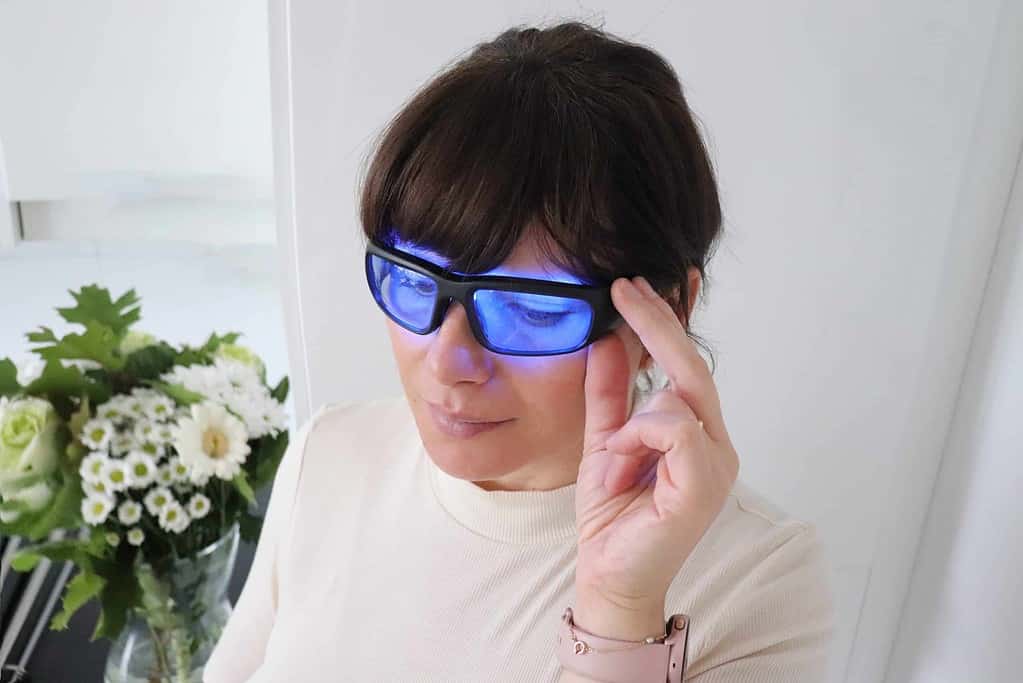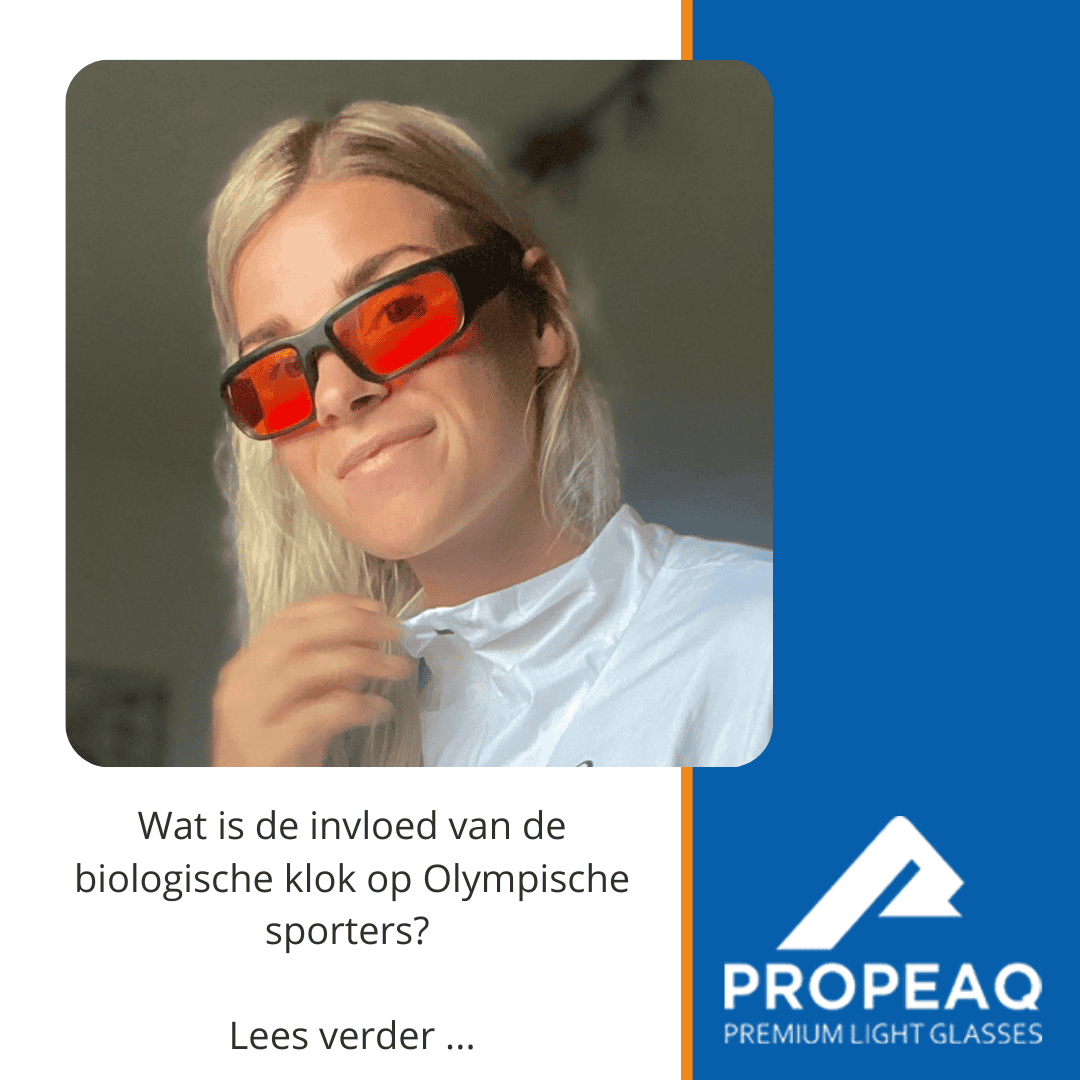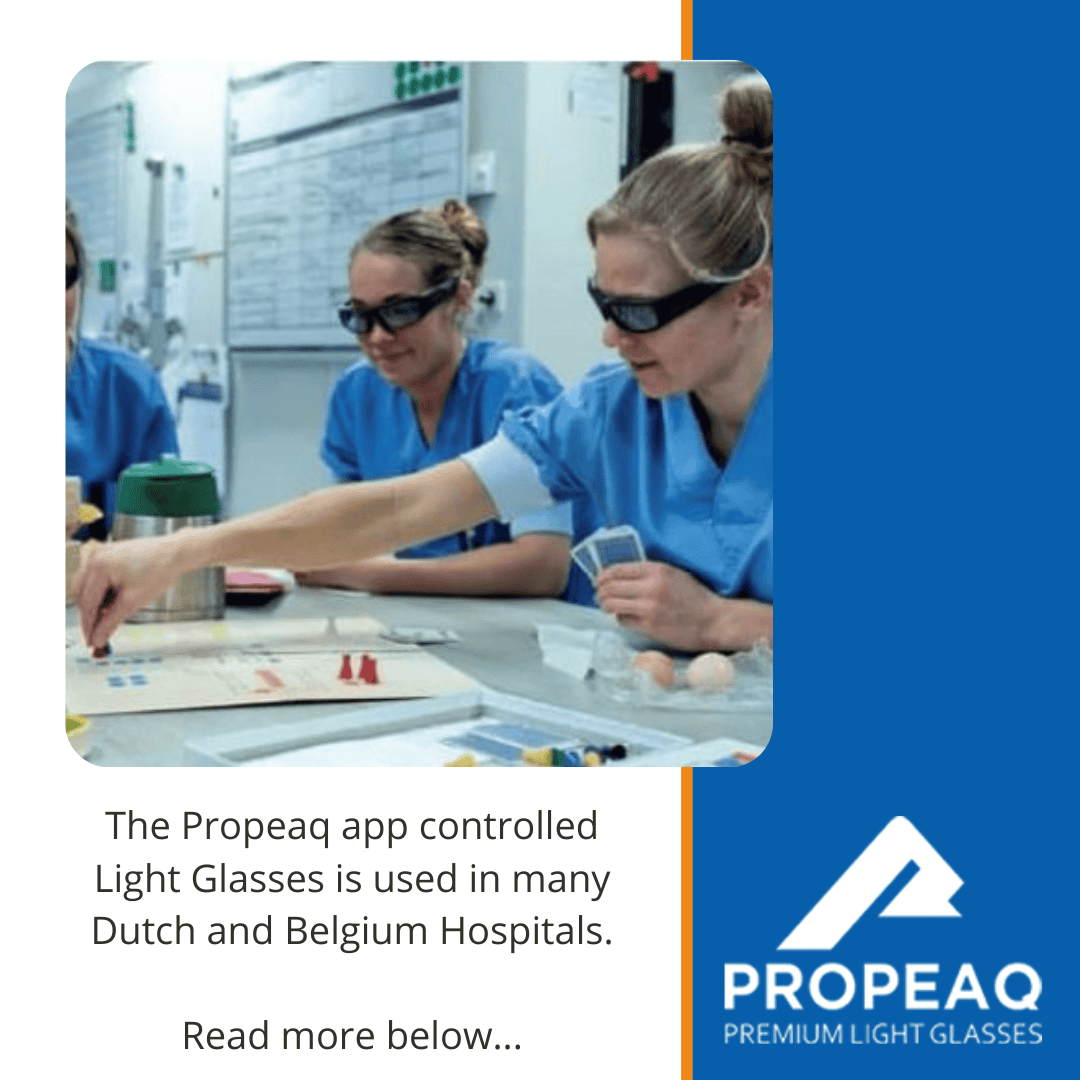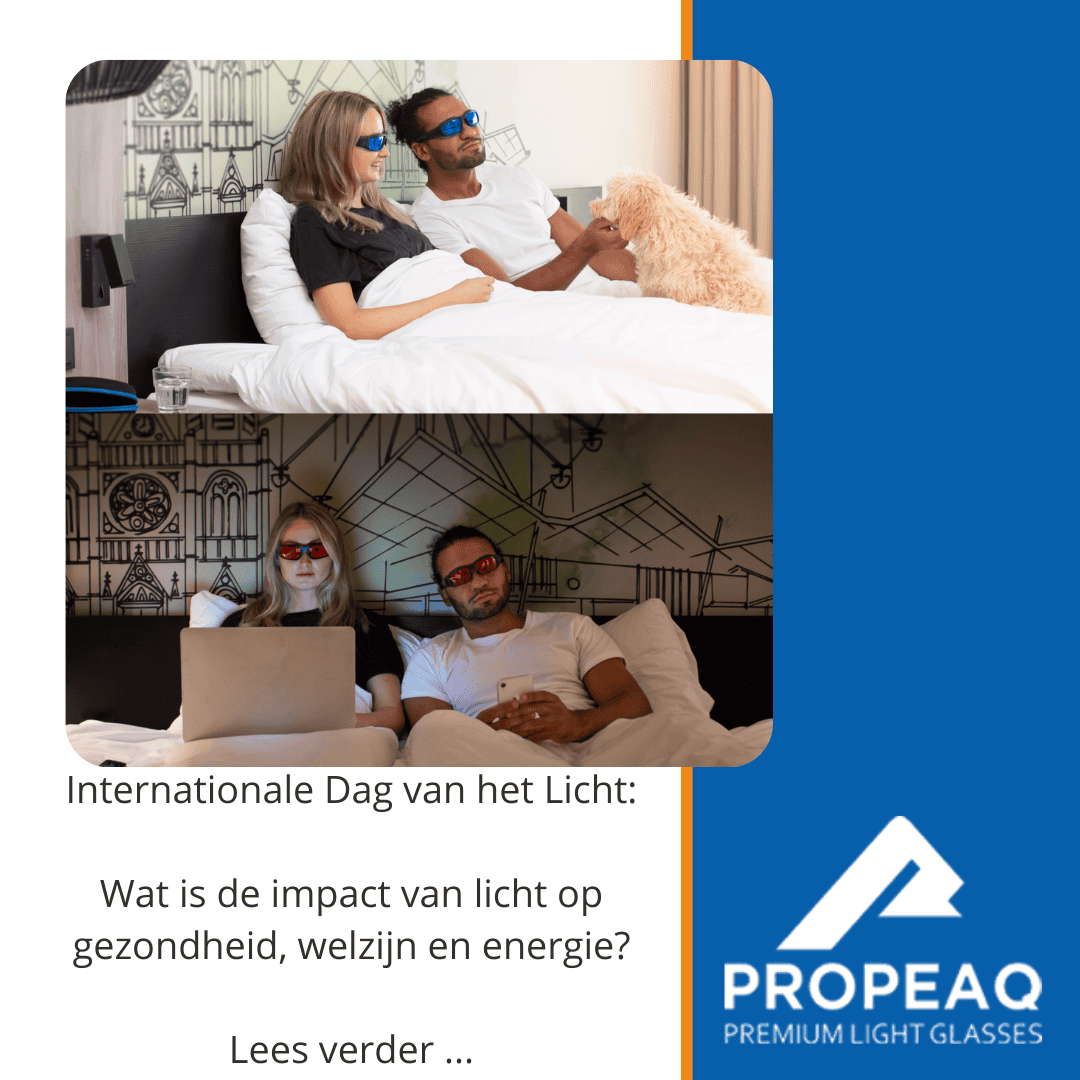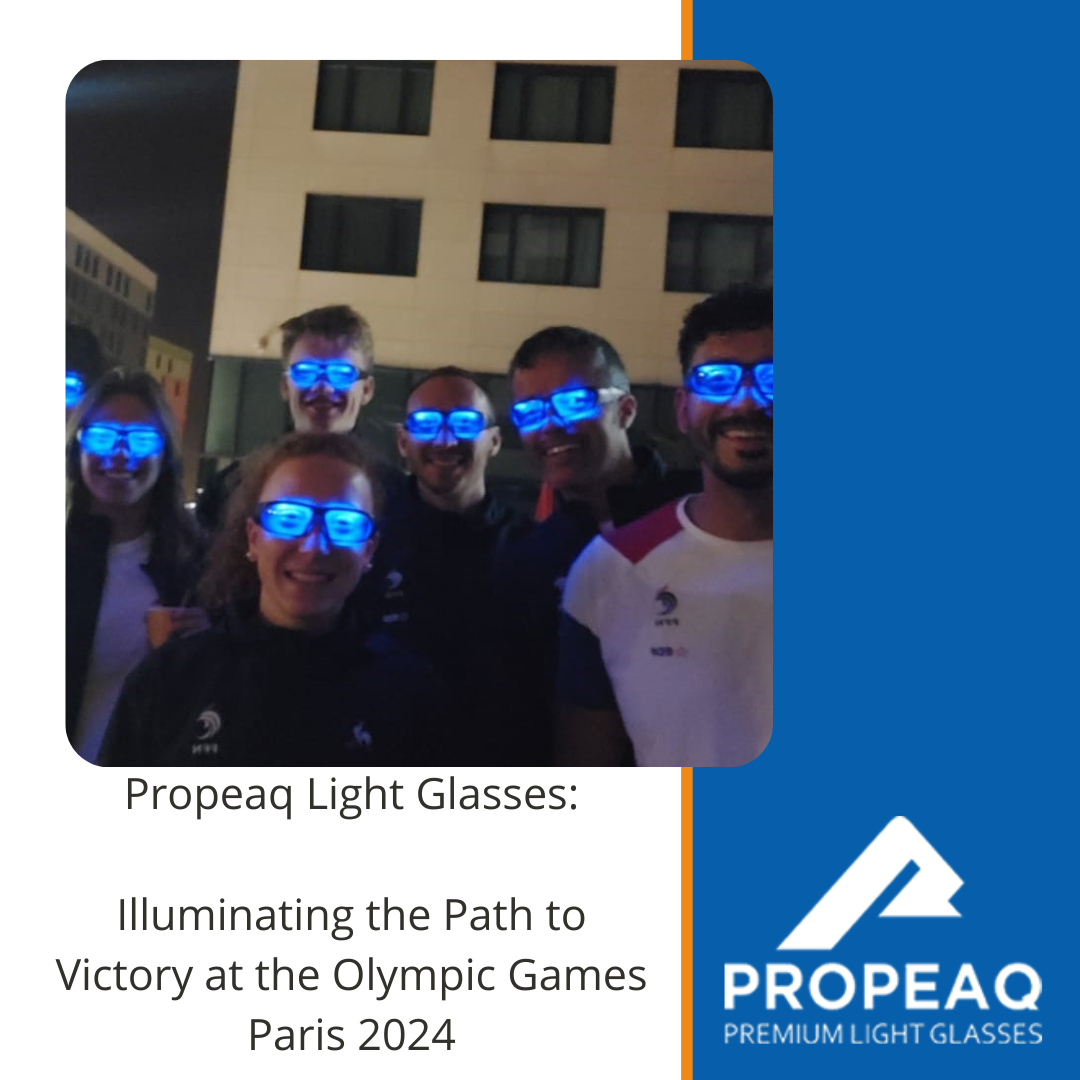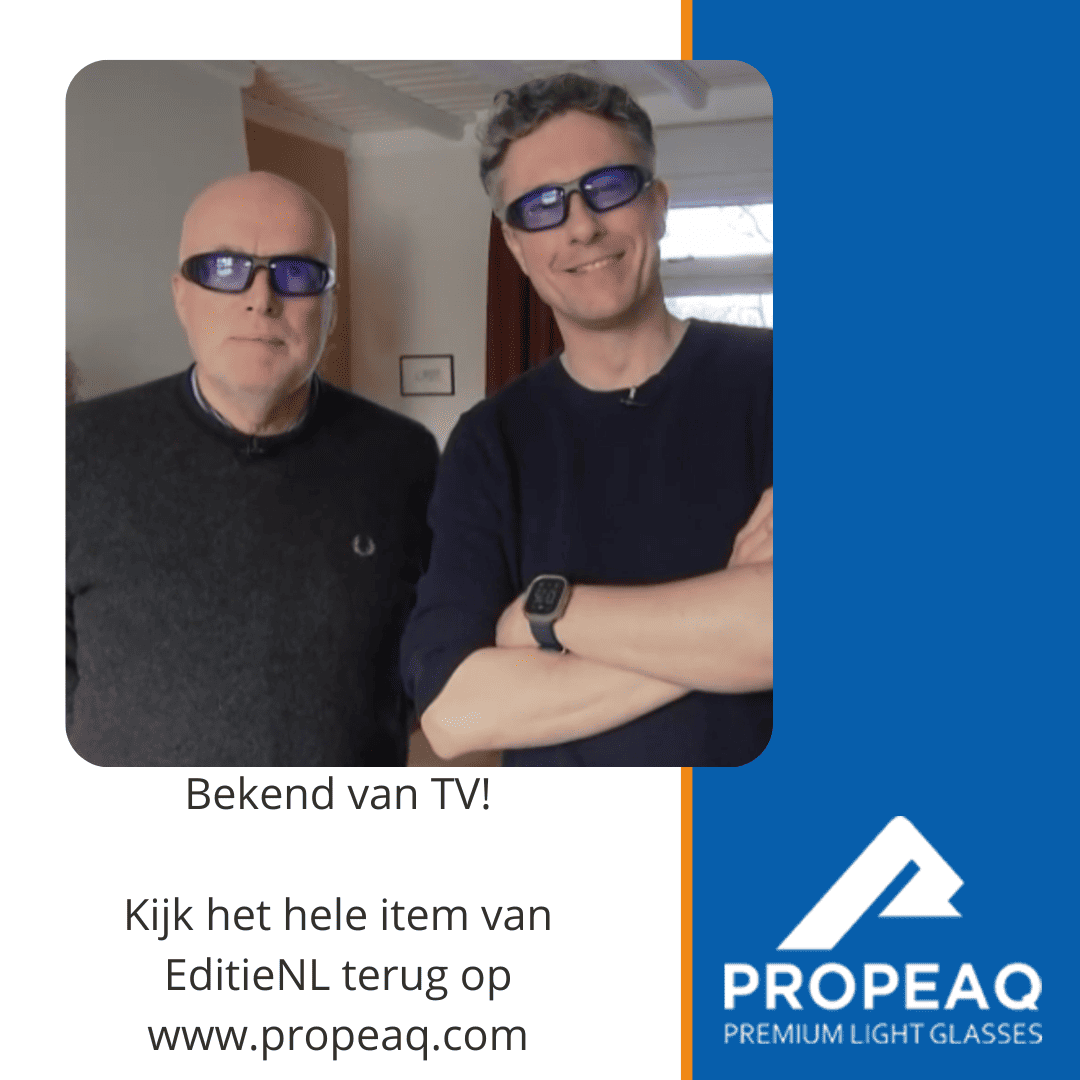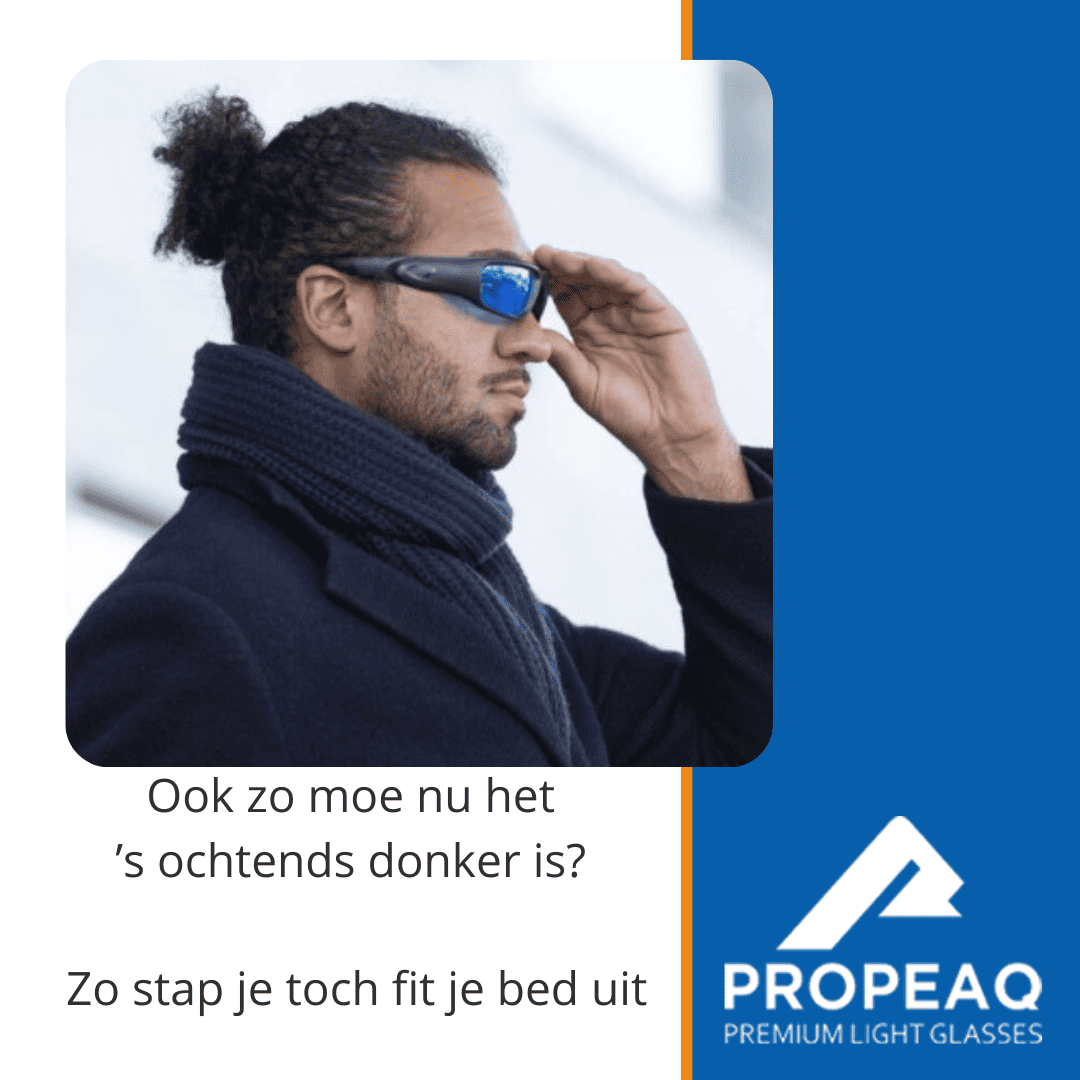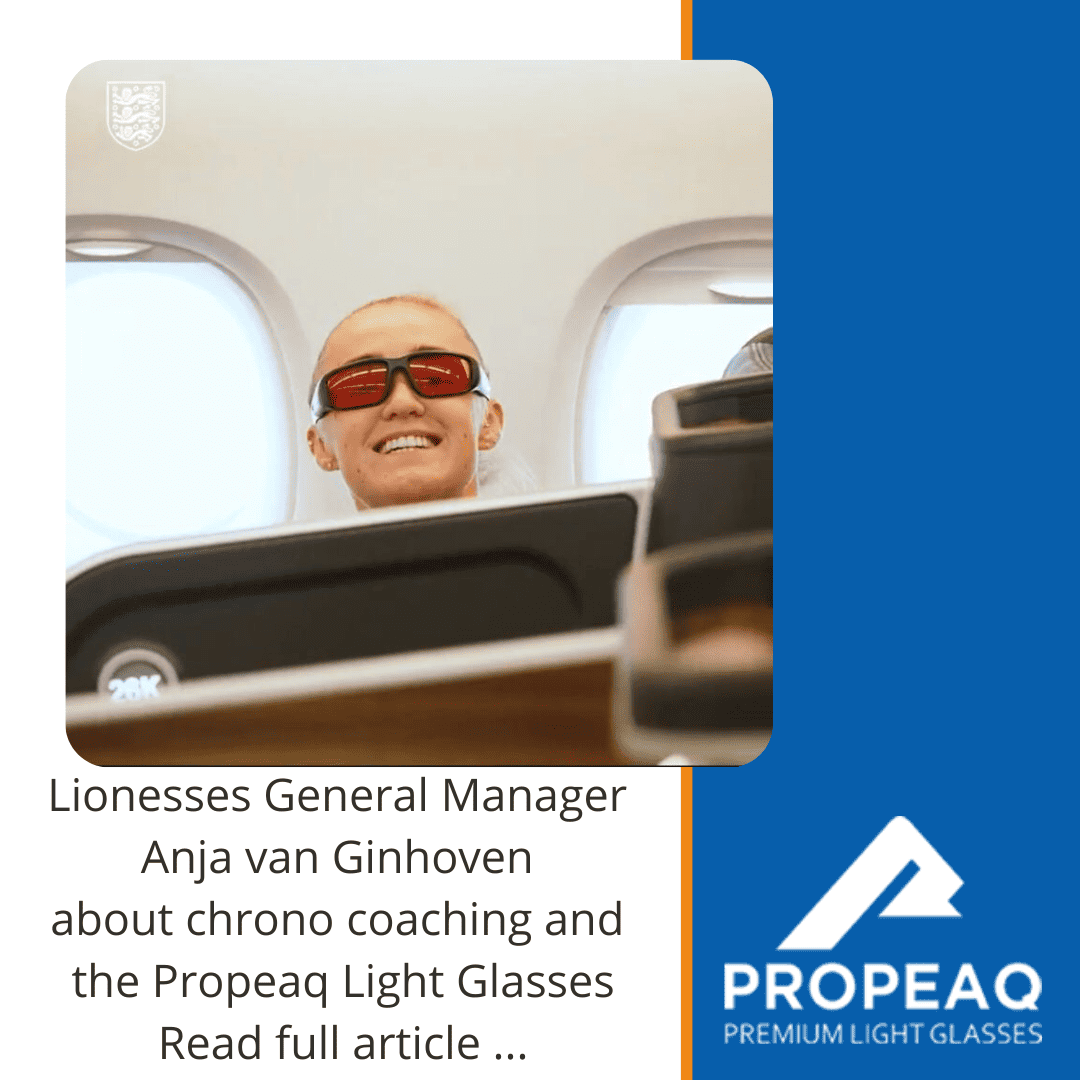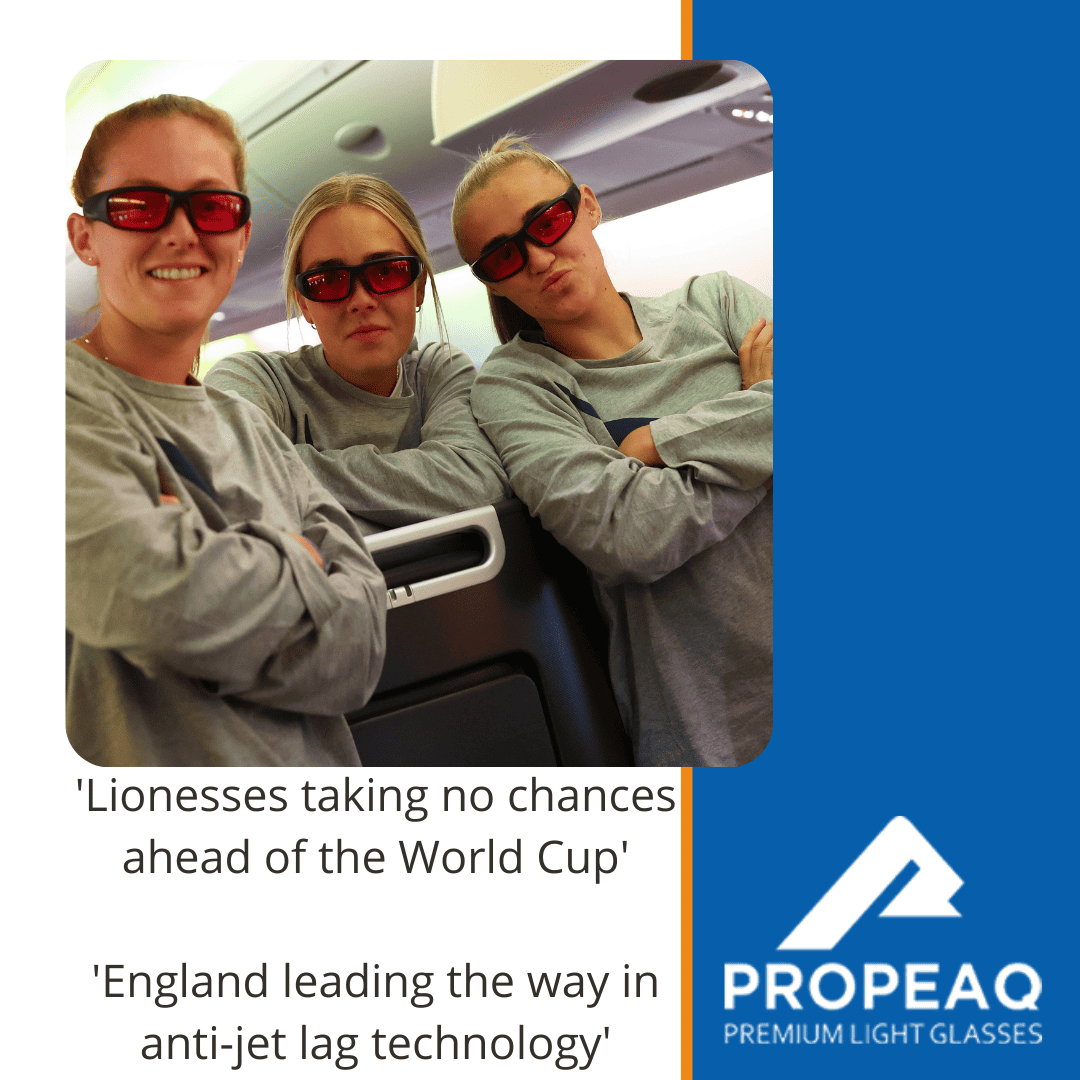The term “Chrono Caching” is more exciting than it actually is. It actually is the counterpart of Light Therapy whereas Light Therapy is used to treat certain medical conditions such as Seasonal Affective Disorder. The word “therapy” is often associated with being sick.
Chrono Coaching can be used to relieve a stuffy feeling, such as a winter blues. But is more often used to improve performance so that you can get the most out of yourself. You could see it as a form of biohacking in which you achieve maximum performance in a natural way with different products.
In this article we will introduce you to Chrono Coaching, the science behind Chrono Coaching and the various applications.
What is Chrono Coaching?
Humans have a history of about 200,000 years. At that time we woke up and rose when the sun came up and went to sleep when it got dark. Our lives have only been influenced by artificial light for 300 years, evolution has given us a complex body that adapts to its environment and bends it to its will.
The body reacts to daylight. In the morning we wake up to the blue tones of the morning light, in the evening the body reacts to the red tones of the evening light.
In the current 24-hour society in which everything has to be done immediately, the body can struggle. This is due to the perception of artificial light, which disrupts our biological clock. The artificial light also contains blue tones that our body reacts to.
Chrono Coaching restores your biological, natural rhythm by means of blue LEDs in the frame.
This is how it works; When your rhythm deviates from the natural rhythm, a sunrise can be simulated by means of the blue LEDs, so that your body temporarily stops the production of the sleep hormone melatonin. When blue light is blocked, the production of melatonin is actually stimulated, making you sleepy. Everything falls and stands with blue light!
Different uses for Chrono Coaching
Intercontinental traveling
Whether you’re traveling for work or for sporting events, the first hurdle is overcoming jet lag. Anyone who travels through multiple time zones will have to deal with jet lag. Jet lag occurs when traveling through multiple time zones, disrupting our biological clock.
Ninety percent of travelers experience jet lag when traveling east. Only ten percent of travelers experience jet lag when traveling west.
You can now influence the synchronization of the internal clock yourself by administering blue at the right times or by filtering blue light. With a tight light and sleep schedule of a few days, you can easily synchronize your internal clock.
That control of the biological peak moment works has not only been scientifically proven, various Olympic athletes and teams have proven it by winning gold medals with the right dose of light. The only thing they need to pack extra in their luggage is the Propeaq light glasses.
Shiftwork (night shifts)
Anyone who does night work and therefore works irregular shifts knows the dip: the moment when sleep threatens to strike while you are still working. Our internal clock produces that sleepy feeling under the influence of the cycle of day and night.
Daylight wakes us up and keeps us awake, when night falls the body prepares for sleep. When the outside temperature is lowest, human energy also reaches its lowest point, the moment of deep sleep. This is how our biological clock has been programmed since prehistoric times.
Still, staying alert and energetic during night work is possible with Chrono Coaching. You don’t have to use this all the time: wearing it for 30 minutes with the blue light on is enough to stay ahead of the dip. It works like this: the blue light looks like an extra sunrise to your senses. Your body responds by temporarily stopping the production of the sleep hormone melatonin. You can still perform at level for a few hours afterwards, as long as you use the blue light before you feel the dip.
Winterblues
Did you know that about 11% of the population suffers from the winter blues? In the Netherlands alone, that is more than 1 million people. A winter blues has to do with the lack of natural light in the fall and winter. The sun rises later and sets earlier, for some the commute is even in complete darkness.
By means of light therapy you can counteract the winter blues or even prevent them altogether. What do you have to do for this? Apply Chrono Coaching for only half an hour a day, immediately after getting up.
With the Propeaq light glasses you can go wherever you want. You no longer have to sit in a fixed place. This way you can save 30 precious morning minutes with compared to the use of a conventional daylight lamp and combat the winter blues.
Improvement of the sleep- wake rhythm
The importance of a good night’s sleep is often underestimated. However, a good night’s sleep is essential for good health and a well-functioning immune system. Through light therapy, a tightly regulated sleep-wake rhythm can be achieved in just 30 minutes.
Expose yourself to light with Chrono Coaching for 30 minutes immediately after getting up. The body boots up and is ready for the start of the day. Block out blue light 30 to 45 minutes before going to bed. This ensures that the production of melatonin is not hindered and that you become sleepy.
Blocking blue light can be done by turning off all artificial light. Think of telephones, televisions and other bright light sources. Do you still like to watch television in bed or do you still like to scroll through social media? No problem, wearing glasses with orange lenses also helps. The orange lenses ensure that the blue light is filtered.
Ongoing research
Parkinson’s
The Radboud University Medical Center in Nijmegen conducts a lot of research into Parkinson’s disease. A phased study is currently underway into the possibilities of using blue light in Parkinson’s patients. Blue light glasses have been introduced as a potential new method to treat sleep and mood disorders in patients with Parkinson’s disease (PD). Assessing patient acceptance is an important first step towards formal testing and introduction into clinical practice. The results of the first phase were published in June in Parkinson’s Disease (Hindawi) Volume 2019. Below is a summary and a link to the publication.
Resume
Monochromatic blue light glasses have been introduced as a possible new method to treat sleep disturbances in patients with Parkinson’s disease. Assessing patient acceptance is an important step towards testing and introduction into clinical practice. Fifty-eight patients with Parkinson’s disease use light glasses for at least a week. 74% of respondents reported subjective improvements in nighttime sleep, daytime sleepiness, depressive symptoms, motor skills or a combination thereof. With the exception of one patient, all respondents want to continue using the light glasses, mostly because they consider it a useful tool.
Conclusion
Portable light therapy with monochromatic blue light appears to have a positive effect on sleep, mood and motor symptoms in Parkinson’s disease. Patients generally had a positive appreciation of the light glasses as a treatment for sleep and mood disorders. Much research has been done on the relationship between light, sleep and Parkinson’s disease. The studies offer hope with often extraordinary results. Light expert Toine Schoutens is involved from Chrono Eyewear BV (Propeaq) in research into the effects of specific blue light in the bandwidth of the patented Propeaq glasses. The results of the first study were published in a peer-reviewed international journal in June 2019:
Blue Light Therapy Glasses in Parkinson’s Disease Patients’ Experience: Hindawi Parkinsons Disease:, Bastiaan Bloem PhD, Daniel van Wamelen PhD, Katarzyna Smilowska PhD from the department of Neurology, Radboud University Nijmegen (NL) and Toine Schoutens from Chrono Eyewear BV, Tilburg the Netherlands.
Volume 2019 |Article ID 1906271 | 4 pages | https://doi.org/10.1155/2019/1906271
ADHD & Delayed Sleep-Phase Syndrome
Many people with ADHD suffer from the so-called Delayed Sleep-Phase Syndrome (DSPS), also known as sleep rhythm dysregulation. Its treatment is the responsibility of a psychologist, psychiatrist or other specialist.
DSPS is a chronic dysregulation in which the client’s biological clock is out of sync with the morning rise/night sleep pattern of most adults and adolescents. People with ADHD and DSPS usually fall asleep very late and also have trouble getting up in the morning. Often clients report that they can’t fall asleep until early in the morning, but they do fall asleep at the same time every night, regardless of when they go to bed. As a result, they can get into trouble (sleep debt) if they have to get up on time for a normal school or work day, since in those cases they have only had a few hours of sleep.
If they can stick to their own sleep schedule and have no other disorders like sleep apnea besides DSPS, they sleep well. They then wake up on their own and don’t feel sleepy until the next night. They have a normal need for sleep in their DSPS, for example from 4 a.m. to 12 noon. The result is that clients receive too little daylight and suffer from a dysregulated metabolism with overweight or type II diabetes.
Therapy
The treatment of DSPS is quite simple but requires the necessary resilience. It requires a different approach than treating insomnia or insomnia (difficulty falling or staying asleep due to worrying). Discipline in following the instructions is extremely important for the success of the method.
- Mild and moderate cases of DSPS can be treated by having the client go to sleep 15 minutes earlier each day until the desired bedtime is reached. In the morning, light therapy is taken with light glasses for 30 minutes, for example during breakfast, eventually preferably at a fixed time between 7 and 8 a.m. If you get up late, get up 15 minutes earlier every day followed by 30 minutes of light therapy. Go to bed 15 minutes earlier every evening/night until the desired moment is reached, preceded by wearing orange glasses for 30 minutes.
- Avoid light after 9:00 PM, then put on PROPEAQ light glasses (light off) with orange lenses. No screens (PC, laptop, tablet, smartphone) after 10 p.m. until the moment one goes to sleep.
- Before the start of treatment, the client is asked to sleep regularly the week before, without taking naps during the day, at times that feel right for the patient. It is important that the patient is well rested before starting treatment.
- Once the client has achieved an earlier sleep schedule, it should be adhered to very strictly. People with DSPS are advised not to go to bed until they are actually tired, as this usually does not result in an earlier night’s sleep. They are also advised not to consume alcohol and caffeine from 20:00 onwards.
- Use a sleep diary or sleep app.
- Adjust lifestyle. Late chronotypes are often active (and creative) in the evening and night. It is recommended to slowly shift this behavior to an earlier time if DSPS involves a reduction in quality of life.

